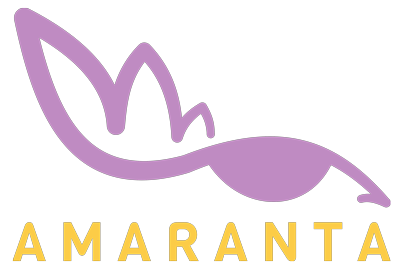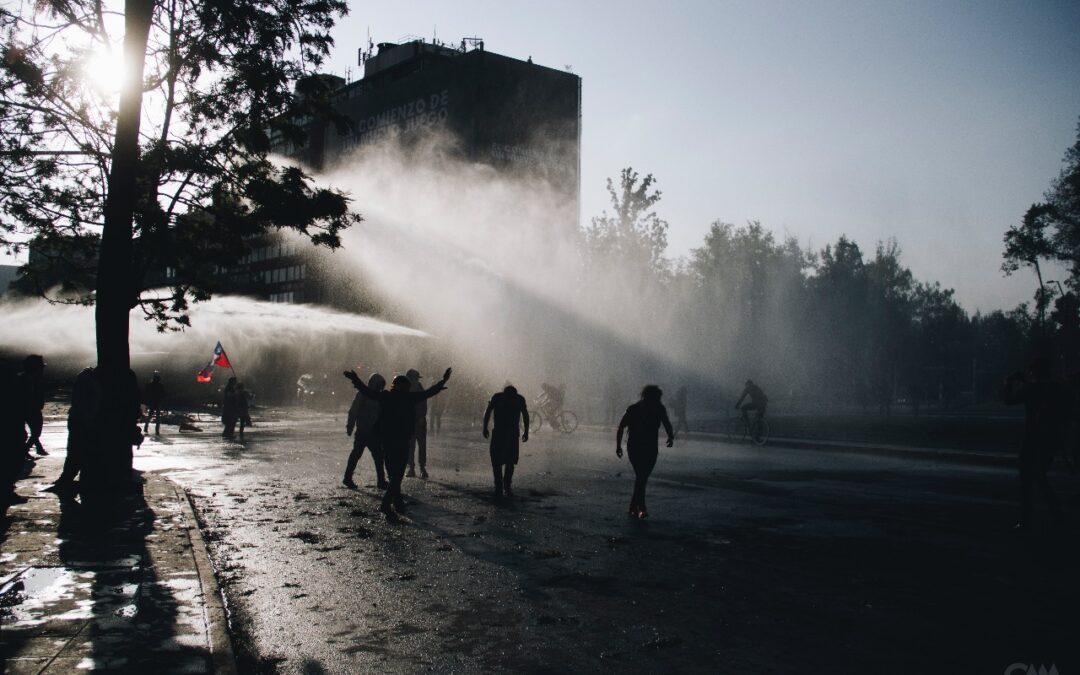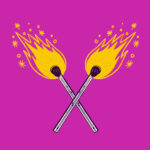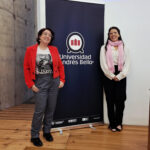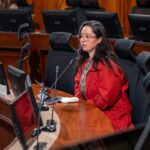Report of the journalists from NGO Amaranta, Karen Vergara and Cecilia Ananías.
Translated by the lawyer Natalia Bórquez and Cecilia Ananías.
Chile «is a real oasis with a stable democracy», said President Sebastián Piñera at the beginning of October in the «Mucho Gusto» program of Mega -a national channel-, after being consulted about the crisis that plagued Peru and Ecuador. Only ten days after pronouncing this phrase, the protests that broke out in Santiago and then became widespread throughout the territory made it clear that the oasis was nothing more than a mirage.
Although the protests began with calls from the students to avoid paying the Metro ticket, given a new price increase, it has not been the only demand for a long time: «It is not for 30 pesos, it is for 30 years», they exclaim in the streets.
See more: Santiago, Chile: State of emergency decreed due to manifestations for the cost of living

Photo: Caterina Muñoz
Santiago, the capital, was the first place where the State of Exception was declared, in response to the social crisis. It was followed by the other two largest cities in the country, Valparaíso and Concepción. Subsequently, it was declared for the cities of: Coquimbo, La Serena, Antofagasta, Valdivia, Talca, Chillán, Chillán Viejo, Temuco, Padre Las Casas and Punta Arenas. That means 11 of the 16 regional capitals of the country are in a state of emergency, which consists in restricting the freedom of movement and association, and also adding a curfew that restricts the movement of people and vehicles in certain schedules and the departure of the military to the streets.
Until Monday, October 22, the official sources spoke of 10 thousand soldiers in the streets, who joined the work of Police (Carabineros) and Investigative Police – both police forces in the country – carrying out identity checks and taking hundreds of detainees with unclear motives.
Conspiranoia
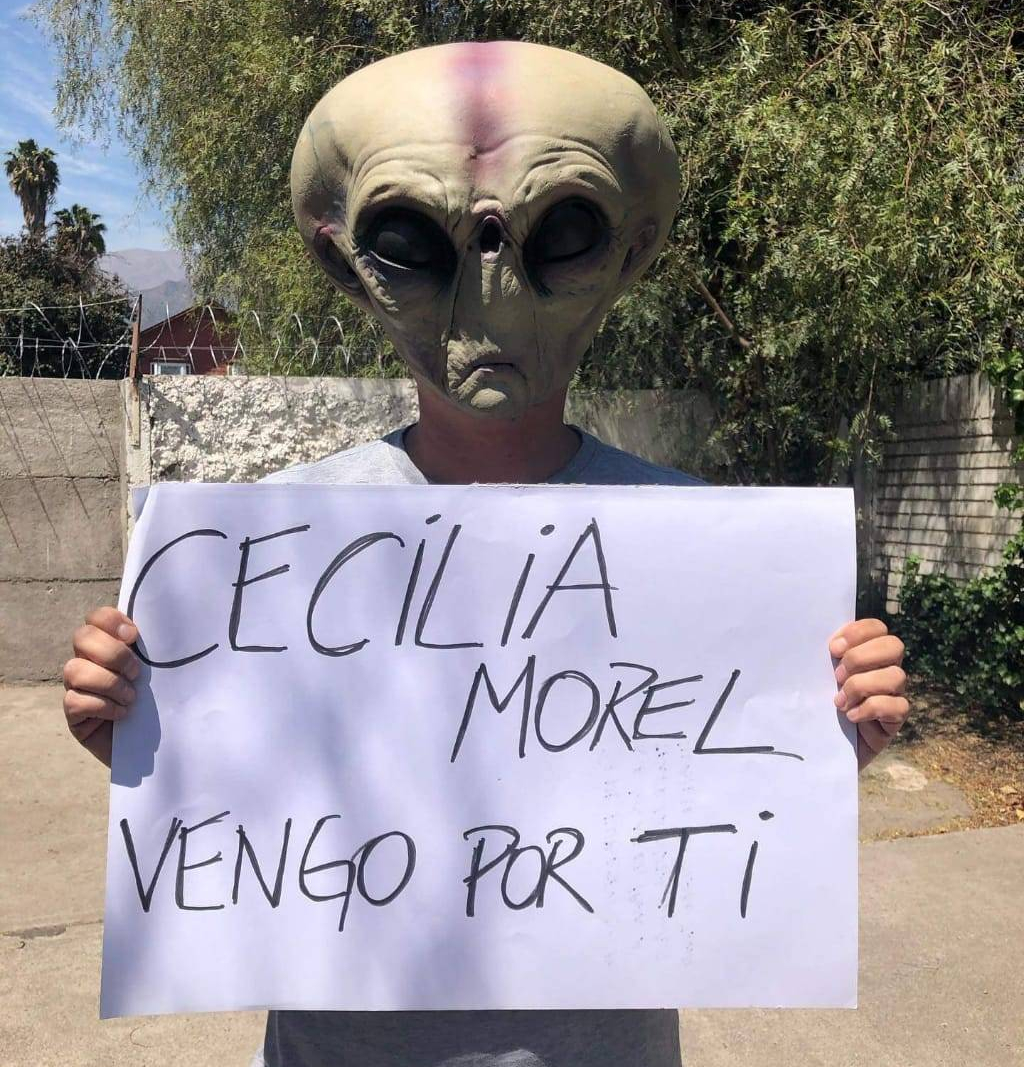
«Cecilia Morel, I’m coming for you».
«It’s like an alien invasion»: this is how the First Lady, Cecilia Morel, described the citizen demonstrations in a leaked WhatsApp audio that she allegedly sent to a friend; a strategy that goes back to the time of the Chilean dictatorship, when speaking of a supposed terrifying plan of shortages and incendiary attacks on airports and hospitals. Other politicians attributed the protests to an alleged interference of the Venezuelan Nicolás Maduro, or the international communist party, making clear the bubble of privilege in which 1% of the country lives.
This is because for the common of Chileans, the only strange thing was so many years enduring in silence: low wages and precarious jobs; the high costs of basic services, medicines and food; the badly brought public health and education system; the very poor retirements of older adults; the expensive and unworthy of public transport; children whose childhoods are still being violated in the “Servicio Nacional de Menores” (National Minors Service); the looting of water and other natural resources, an increase in the number of suicides of young and the elderly, and so it goes on, that portray us as one of the ten most unequal countries in the world.
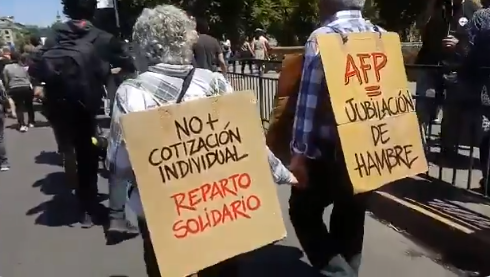
Older adults marching for improvements in their retirement.
This Wednesday, days after the start of the demonstrations and between constant reports of police violence and the outrageous declarations and false fixes emanating from the State, it is difficult to summarize what happens in a single report. During the night, the noises of the cacerolazos (protest in which the protesters beat rhythmically pans, pots or other domestic utensils) are mixed with the shouts, shots and the smell of the tear gas in different parts of the country. In the case of Santiago, the helicopters fly all night, with a powerful light that seeks to sneak into each house and apartment, generating fear and difficulty sleeping.
It is difficult to rest during night. In the air, you can breathe social effervescence and solidarity, mixed with fear and anguish. The brutal way in which the State has responded to the protests is a constant reminder that the dictatorship is still too much alive in Chile and that it can rise again on citizenship with only a couple of burned supermarkets; because, in a country where shopping centers only place a “tent” when someone commits suicide in their premises, it is clear that the material things are above human life.

Photo: Caterina Muñoz.
During these days in Amaranta NGO we have carried out an exercise of historical memory: we’ve been seeing the documentary “Chile, the forbidden images”, which shows in several chapters the archives saved by audiovisuals, reporters and graphics about the years of dictatorship (1973 -1989). The similarities are overwhelming: police and military abuse, which in those years was so difficult to register, now appears on every phone and computer. The official discourses speak again of a war, of an enemy that seems articulated and devastating, although in practice it only has a saucepan and a wooden spoon -tools that the people use to protests-.
The absence of leadership of this outbreak continues to have the Chilean political class challenged, which still feels empowered to replicate campaign promises, bills that are already sleeping in the Congress and promises that are tied to some loss for mobilized people.
This is an attempt to compile the main milestones of the crisis and protests rallies in Chile for a decent life, dividing them into subsections.
State Violence
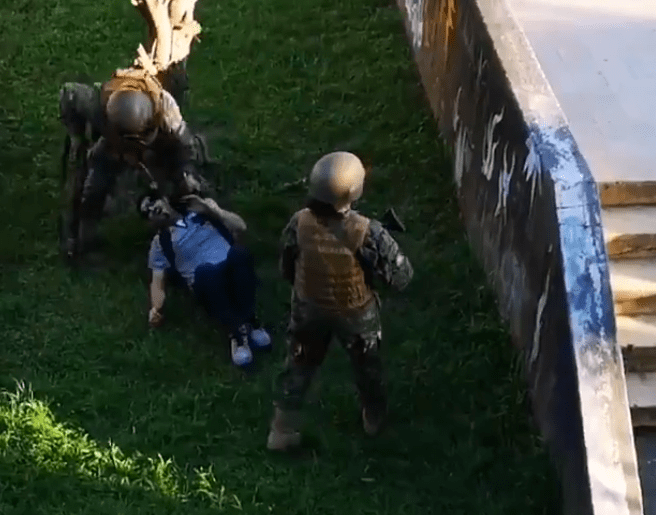
Man who was shot at close range in the leg by the military, then stopped illegally. Concepcion, Chile.
The National Institute of Human Rights (INDH) until Wednesday October 23 in the morning, counted five people killed by the alleged action of military and police. They were identified as: Romario Veloz, from La Serena (Coquimbo Region), because of a shot in the neck. Alex Núñez, Maipú (Metropolitan Region), because of blows with truncheons in the skull and thorax. Kevin Gómez, Coquimbo (region of the same name) was shot by a soldier. Manuel Rebolledo Navarrete, in Talcahuano (Biobío Region), hit by a military vehicle and José Miguel Uribe Antipán from Curicó (Maule Region) who was shot by a military. Until that report, 269 injured people were counted, of which 137 are injured by firearms and 1.894 detained.
This information was delivered by the director of the National Human Rights Institute (INDH), Sergio Micco, who has also revealed that police violence has been growing over the days. In addition, they have also registered cases of sexual violence, accumulating 3 judicial actions so far.
Another of the complaints that the INDH is carrying out is a serious case in Peñalolén -city in the Metropolitan Region-, where three adults and a minor were arrested during the curfew on Monday 21. Carabineros accused them of robbing, despite the fact that they said that they were going to the minor’s grandmother house. When they were transferred to the 23rd Peñalolén Police Station, they arrested a fourth subject. After that, all the detainees, including the 14-year-old teenager, were subjected to torture.
According to the complaint, collected in a note from La Tercera: «The detainees were ‘crucified’ in the metal structure of the police station antenna, hanging from their handcuffs. » Pepper gas was also used and they were subjected to beatings.
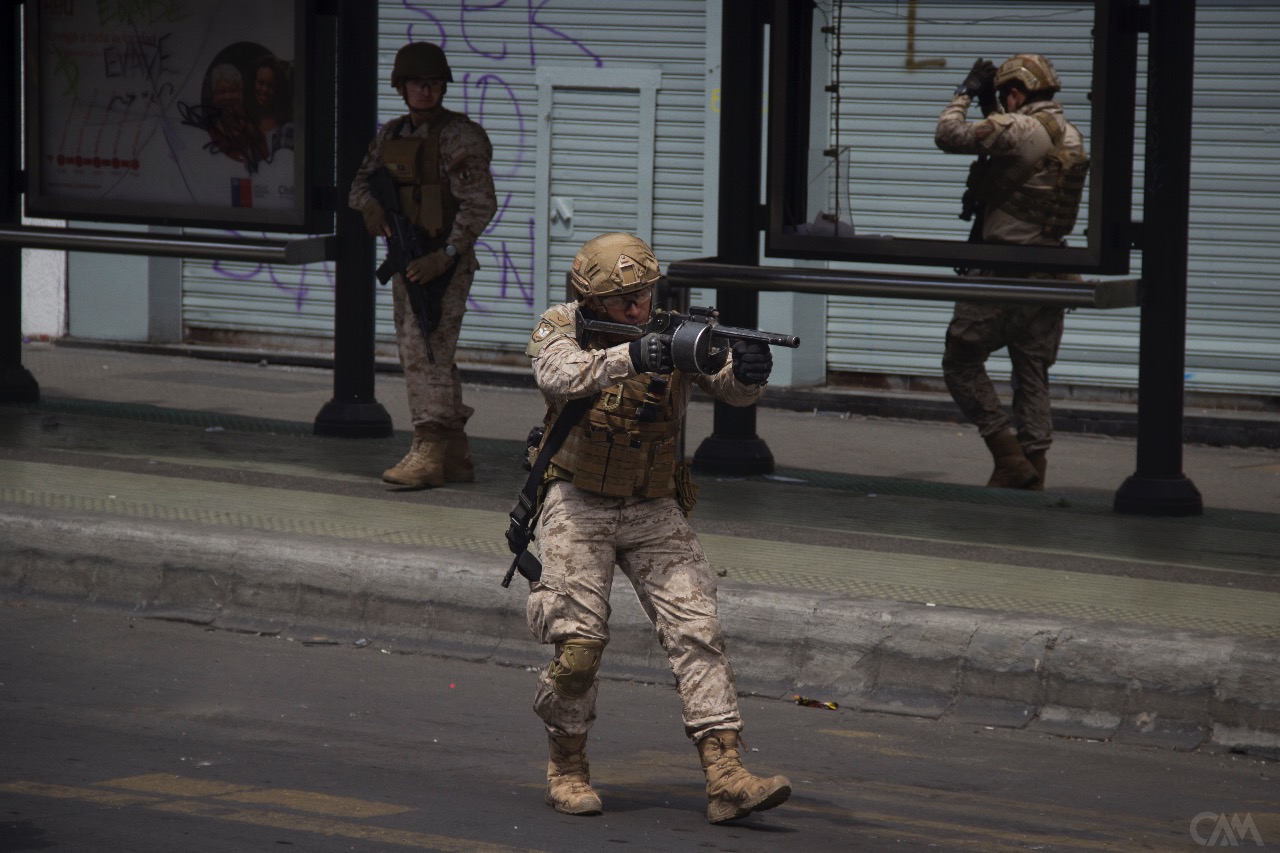
Photo: Caterina Muñoz.
This story adds to the allegations of torture and detention under the capital underground. A viral complaint revealed that people were being arrested and tortured at the Baquedano Metro Station, after a young man was rescued by the Red Cross from the spot, visibly traumatized and injured. Because of this, the INDH approached to investigate early in the morning. From this agency, they were insistent in pointing out that the results of the investigation carried out by the Public Prosecutor should be expected. On Twitter, it is denounced that police would have cleared the scene of evidence, but this is research material.
Detentions of social leaders
Only in the early hours of Wednesday, through social networks was possible to see the illegal detention by Carabineros of Pablo Ferrada, Anais Pulgar and the spokeswoman for the “Coordinadora Nacional de Estudiantes Secundarios” (National Coordinator of Secondary Students, CONES) Valentina Miranda, all militants of the “Juventudes Comunistas” (Communist Youth) , which has the congresswomen Camila Vallejo and Karol Cariola in the offices of the “ 3ra Comisaría” (police station) of Santiago.
🔴URGENTE DENUNCIAMOS: Carabineros detuvo a nuestros compañeros Pablo Ferrada, Anais Pulgar y la vocera CONES, Valentina Miranda (@ValentinaVocera) mientras se encontraban dentro de su edificio. Los golpearon y lanzaron gas pimienta. Exigimos respuesta ante este hecho gravísimo pic.twitter.com/oI1gTM3d5p
— JJCC Chile (@jjcc_chile) October 23, 2019
A similar case was registered in Viña del Mar, where sociology student Francisco Reyes Aguayo, who is also a social leader of Ventanas – an industrialized area where its inhabitants have marched for a clean environment, following constant mass poisonings- was illegally detained. The young man was illegally detained in his own home by police forces, who not only mistreated him; they also attacked his father, his 85-year-old grandmother and his domestic environment. Reyes was taken to different police stations, while he was mistreated during the trip, to be subsequently left at the “Primera Comisaría de Viña del Mar” (First Police Station of Viña del Mar). He was not released until the next morning, according to information from the “Federación de Estudiantes de la Universidad de Valparaíso” (Student Federation of the Universidad de Valparaíso) – his University-.
Comunicado público de la Federación de Estudiantes de la Universidad de Valparaíso ante la detención ilegal de Francisco Reyes Aguayo, estudiante de Sociología. @Feuv @PiensaPrensa pic.twitter.com/cioBRQqOyJ
— Camila (@Camii_li) October 22, 2019
From the first day of the protests the incomprehensible and violent acting of the police and armed forces was made visible in different videos and images captured by the citizens. One of the first cases that went viral was that of the illegal detention of the director of the “Observatorio Contra el Acoso Chile” (Observatory Against Harassment Chile, OCAC), María José Guerrero, who was on a public road participating in the protests when she was arrested. The situation was recorded in a live broadcast on Instagram which showed how a carabinero (police agent) dispersed the protesters. «Enough, what is your name?», he asks to the OCAC director. The officer takes her while other people ask the reason for the arrest, with no answer from him.
These are just some of the cases of detained, abused and threatened social leaders who have come to light, but would not be the only ones.
Response from the State: Bonds, but not structural changes
President Sebastián Piñera presented on Tuesday, from the Palacio of La Moneda, a set of proposals for a “social agenda of national unity”, and then affirm that “it is true that the problems accumulated for many decades and that the different governments were not able to recognize this situation in all its magnitude. I recognize and apologize for this lack of vision.”

President Sebastián Piñera. Imagen from 24 Horas.
Among its set of proposals, there was the immediate 20% increase in the Basic Solidarity Pension – monthly monetary benefit that can be accessed by all persons who do not have the right to a pension under any pension scheme-. Although this will benefit 590 thousand pensioners, in practice there are only 21,400 chilean pesos more ($ 29 USD).
Also, he announced the creation of a Minimum Guaranteed Income of 350,000 pesos ($ 482 USD), for all full-time workers and the reduction of the diets of parliamentarians and high salaries of the public administration; This announcement included the reduction in the number of parliamentarians and limitation of reelections (which could limit the reach and democracy of the Legislative Power).
Full proposals can be reviewed here. In general, he announced many projects that were being requested decades ago and whose proposals do not point to a change in structural inequality, but only to patches that should be financed by the State and its citizens.
From the community is urgently required the end of the State of Emergency and individual restrictions, including taking military and police forces from the streets. And then, generate a Constituent Assembly to change the unequal model in which Chile is based. This would include changing the current private health system (Isapres), known for its high prices and for discriminating users by gender, pre-existing diseases, disability, among others, and strengthening and rethinking the public health system (Fonasa); Also, they demand changing the current system of Pension Fund Administrators (AFP), which annually collects millions of dollars in profits at the expense of its contributors, without these ever seeing greater benefits in their funds and retirement.
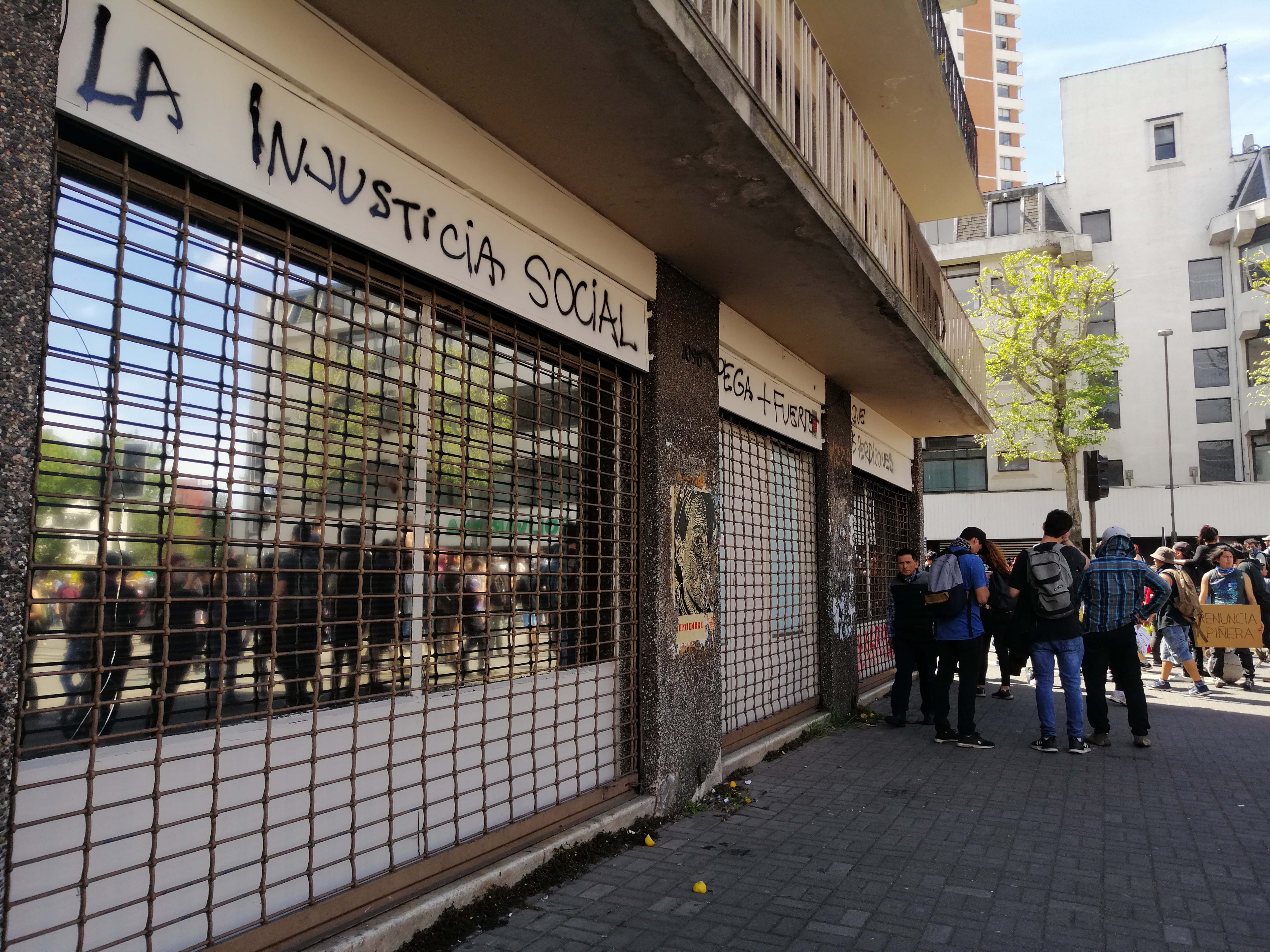
Graffiti in Concepcion, Chile. «Social injustice hits harder than rubber bullets.»
Defense of the territories from extractivism, recovery of water as a national good and recognition of the indigenous peoples are other demands. From other sectors, they even require changing the current Constitution of Chile, which was promulgated during the dictatorship, restricting a series of social rights. Despite the origins of this text, it is fully in force.
Despite the announcements of Sebastián Piñera, the demonstrations continue this Wednesday. Calls have been made to “cacerolear”, march and even to dance massively, in order to demonstrate discontent. By day, the streets are filled with people jumping, artistic and cultural exhibitions, and original protest signs, between the warm spring sun; it is after the curfew, around six in the afternoon, when reports of illegal detentions and human rights violations begin to arrive.

Just Wednesday morning, two more people died in the middle of the protests: it was an adult man and another 4-year-old boy, who were hit by a car. About twenty people turned out injuried, while they were making sounds with pots, pans and pans -form of protests known as ‘cacerolazo’- on Route 160 of San Pedro de la Paz, at kilometer 14 (Villa Los Escritores).
Their deaths were added to the new government count, which already figures at least 18 deaths in the midst of the social crisis. A reminder that they cannot respond to the loss of their lives with just a couple of patch measures and a pat on the back of police and military forces.
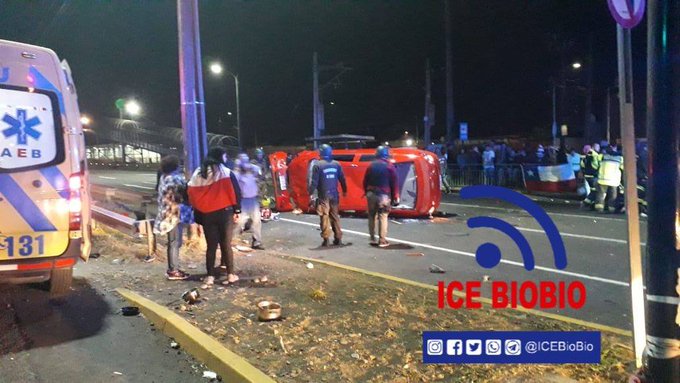
At the close of this note, Rodrigo Bustos, chief legal officer of the National Institute of Human Rights (INDH), explained that the complaints of sexual violence had increased to 8; In addition, there are 24 other complaints of illegitimate constraints or torture. Although the Inter-American Commission on Human Rights (IACHR) expressed its condemnation of the excessive use of force by the security forces in the context of social protests in Chile, the Ministry of Defense called to duty to the reserve of the armed forces, to reform the work in the context of the State of Emergency decreed in provinces and regions of the country. This meaning: more militaries in the streets.
